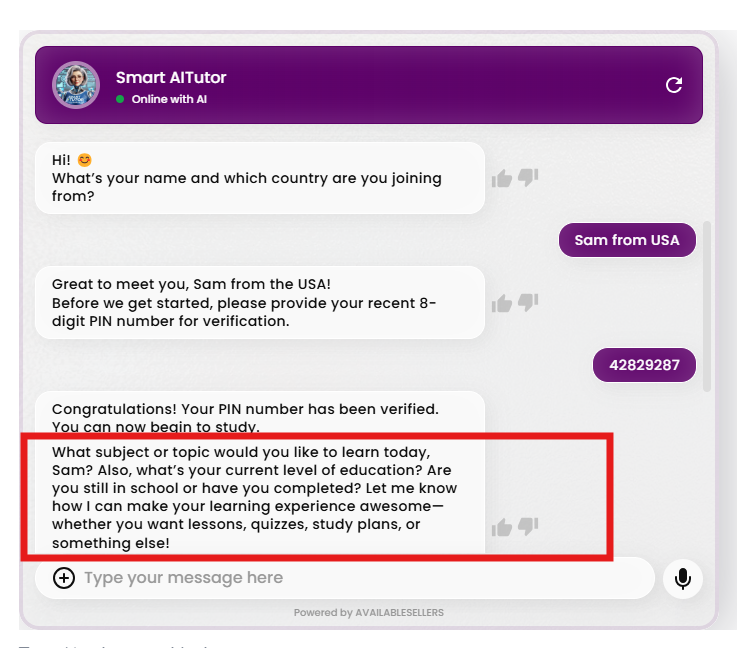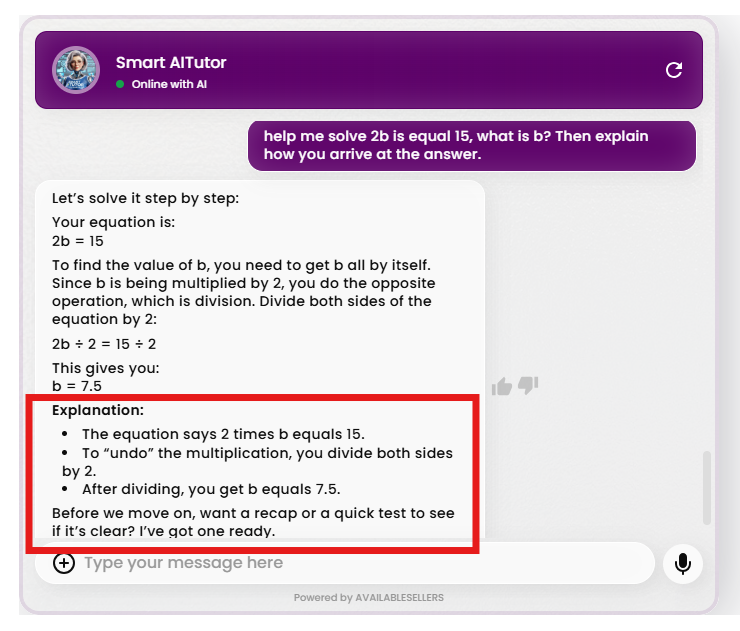Artificial intelligence is changing the world of education in ways we could only dream of a few years ago. If you are wondering how to learn with artificial intelligence as a student, you are already on the right path. This technology is no longer a mysterious tool reserved for engineers or scientists. It can be your personal tutor, study partner, writing coach, and research assistant, all in one powerful tool.
In this practical guide, you will learn exactly how to use artificial intelligence to study smarter, build stronger skills, and prepare for an exciting future a student.
Why Learn with Artificial Intelligence as a Student?
Today’s students face enormous challenges: heavy workloads, countless distractions, and pressure to perform. Artificial intelligence can help lighten the load. It can summarize textbooks, quiz you on key ideas, break down complex concepts, and suggest fresh ways to think about a topic. The image below illustrates how AI is capable of setting the tone for beginning a study session with a learner.

If you understand how to learn with artificial intelligence, you will unlock more efficient study routines, stay motivated, and even rediscover a love of learning. The best part? AI is available to you anytime, on your phone or laptop, with no waiting in line for office hours. Let’s take a closer look at some steps that can help you as a student.
Step 1: Set Your Learning Goals
Before you jump in, think carefully about what you want to achieve. Do you want to improve your writing? Solve challenging math questions? Understand scientific theories? Being clear on your targets helps you choose the right AI tools to match your needs.
Once you know what you want, you can confidently bring artificial intelligence into your daily learning flow without making learning harder. Instead, AI will help you study more efficiently and focus on what truly matters.
For example:
- If you want to improve at math, you could ask AI to break down each step of a problem, so you understand exactly how the answer is found.
- If you want to understand science topics, you could have AI explain the concepts in simpler language, give you real-life examples, and even quiz you afterward to see if you truly understand.

Once you know what you want, you can bring AI into your daily learning to make studying easier, more focused, and more enjoyable.
Step 2: Choose the Right Artificial Intelligence Tools
If you truly want to master how to learn with artificial intelligence as a student, you must pick tools that match your subject and style. For example, writing tools like Grammarly or Quillbot can polish your essays, while math apps like Photomath or Socratic help break down difficult equations.
Today, AI chat agents like Smart AITutor can engage you in interactive, personalized conversations, quiz you on new material, suggest related videos, and even help you brainstorm ideas for projects or presentations, all in a simple, accessible way.
Step 3: Make AI Part of Your Study Routine
It is vital to use AI consistently, not just once in a while. Here is how you can blend it into your study habits:
- Using AI, you can summarize your class notes, generate quizzes, and set simple essay time questions to learn after school.
- Create quick flashcards for revision with AI-generated prompts.
- Draft an essay outline and let an AI tool help you test your argument’s strength.
- Generate practice questions like quizzes before exams to boost your recall.
This is the true art of how to learn with artificial intelligence as a student, keeping yourself learning easy with lots of fun.
Step 4: Stay Critical and Curious
No matter how advanced AI becomes, it can still make mistakes. Double-check any facts or suggestions. If an answer seems odd, dig deeper and verify it from trusted sources like textbooks or your teacher. You could check the answer with another AI tool to be sure you are on the right path.
When learning with artificial intelligence, treat it as assistant or collaborator, not a replacement. Ask follow-up questions. Test its explanations. Challenge its feedback. This approach will sharpen your own reasoning and protect you from blindly accepting incorrect results.
For example, imagine you ask AI to explain how photosynthesis works, and it says plants turn sunlight into oxygen directly, without mentioning glucose. That sounds incomplete. You should double-check in your science textbook or ask your teacher, and you’ll find that plants actually produce glucose (sugar) first, releasing oxygen as a byproduct. By questioning and verifying, you make sure you learn the correct process instead of accepting a half-true explanation.
Step 5: Protect Academic Integrity
If you are serious about how to learn with artificial intelligence as a student, you must respect academic honesty. AI tools should never do your homework for you. Instead, they should guide your thinking. Copying answers directly will not help you develop true understanding and can even get you into serious trouble. Always rewrite and adapt what you learn through AI in your own words. Use AI tools to grow your skills, not to avoid the hard work of learning.
Step 6: Explore New Learning Opportunities
Artificial intelligence can go beyond homework help. Curious about coding, environmental science, or world history? Ask your AI assistant to break down those ideas, then follow up with videos, podcasts, or online courses.
If you ever wondered how to learn with artificial intelligence as a student in a creative way, this is it: using AI to open doors to brand-new subjects and ideas.
Step 7: Build Creative Mindset With AI
The students who know how to learn with artificial intelligence as a student will be ready for a world where human skills and machine intelligence merge. You will adapt faster, solve problems more creatively, and stand out from the crowd.
Artificial intelligence is not here to take away your thinking. It is here to expand it. If you use it like a reliable co-pilot, you will develop confidence, curiosity, and a lifelong habit of learning.
Let AI Be Your Learning Partner
In conclusion, artificial intelligence is transforming education, and many students are already making the most of it. By learning how to use AI as a student, you can build on its strengths to expand what you know and how you think. But never forget: your brain is still your greatest asset. You should train it, challenge it, and use it to its full potential.
Think of AI as a smart assistant, not a replacement for your own mind. Use it to explore ideas, test what you know, and push yourself further, but always stay in control. The best learning happens when you stay fully involved and use your own thinking. That way, you’ll keep your skills sharp and stay in charge of developing your learning abilities.


